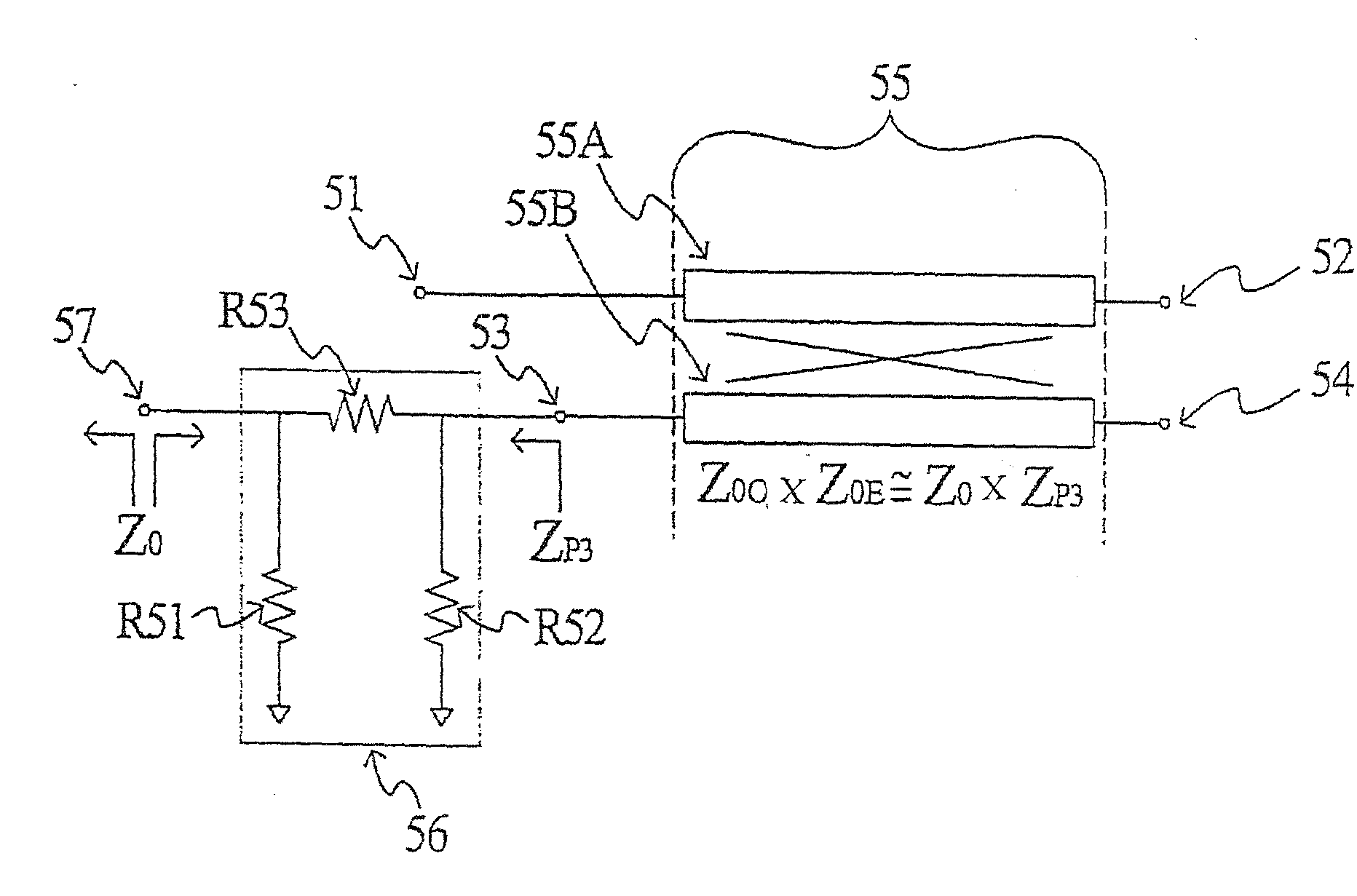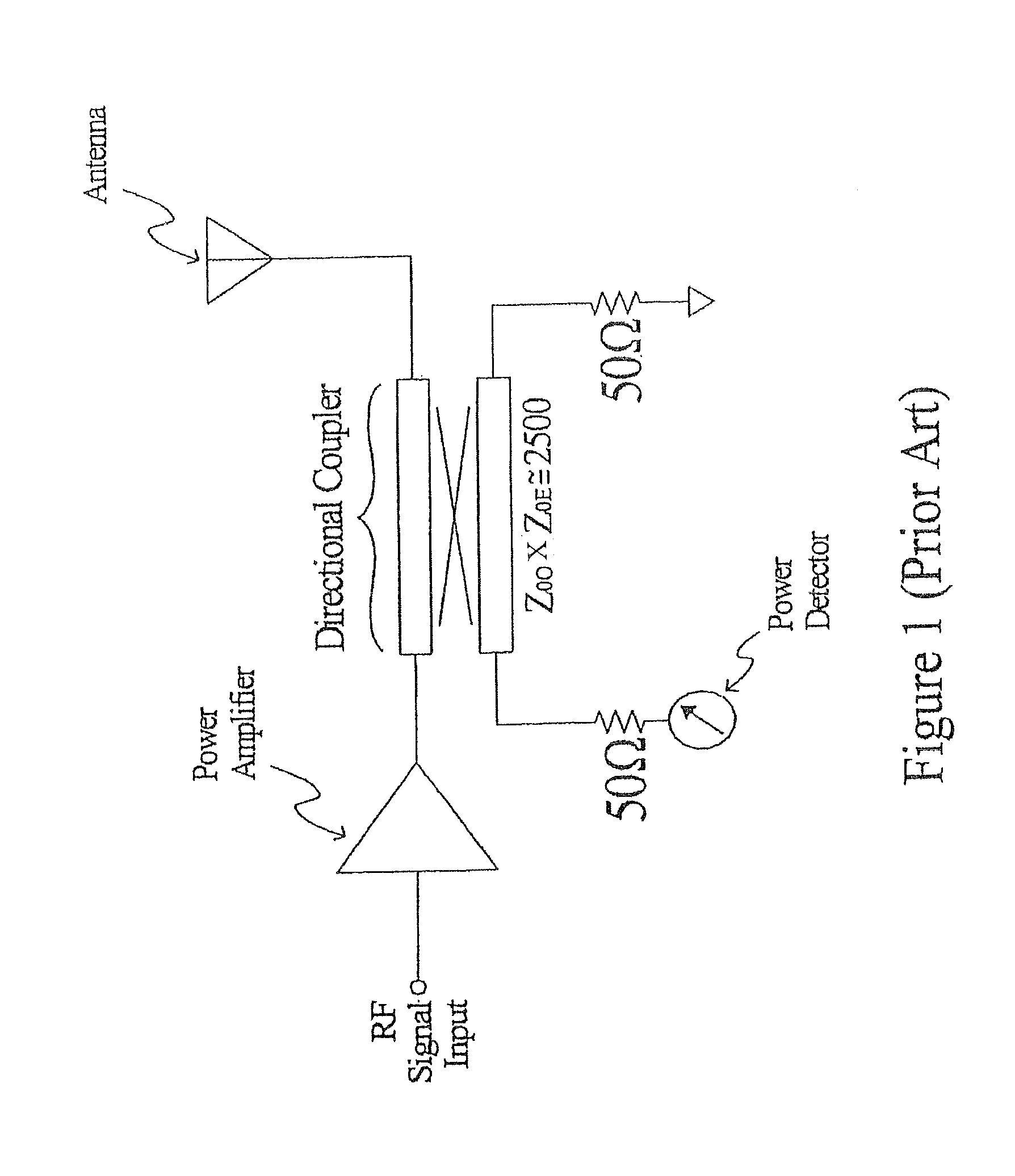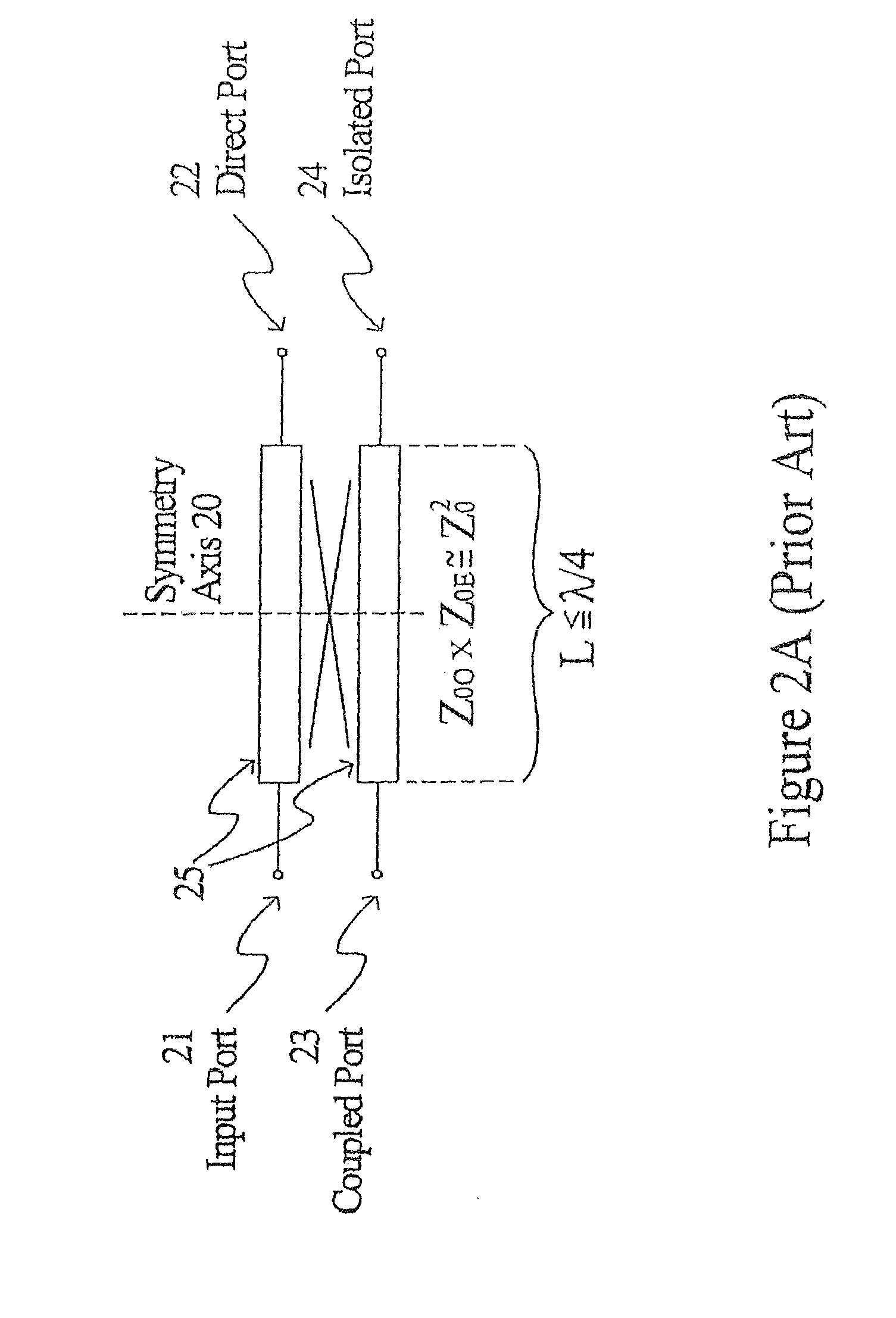Directional coupler including impedance matching and impedance transforming attenuator
a technology of impedance transforming attenuator and directional coupler, which is applied in the direction of coupling devices, electrical devices, waveguides, etc., can solve the problems of limited material properties of substrates, and limited accuracy and control of transmission lines with required physical dimensions fabrication,
- Summary
- Abstract
- Description
- Claims
- Application Information
AI Technical Summary
Benefits of technology
Problems solved by technology
Method used
Image
Examples
first embodiment
[0044]FIG. 5 shows a circuit diagram of a directional coupler according to the present invention comprising a pair of coupled transmission lines 55, the pair of transmission lines 55 being located in close proximity to each other so that they are electromagnetically coupled to each other. The pair of coupled transmission lines 55 comprises a first transmission line 55A and a second transmission line 55B where the first transmission line 55A comprises a first end, to which a first RF port 51 is connected, and a second end, to which a second RF port 52 is connected, and where the second transmission line 55B comprises a first end, to which a third RF port 53 is connected, and a second end, to which a fourth RF port 54 is connected. An input electrical signal that is fed to first RF port 51 will produce a direct electrical signal at second RF port 52, and a coupled RF signal at third RF port 53. Under ideal operating conditions, the same input signal will produce no signal (or a neglig...
third embodiment
[0066]FIG. 8 shows a circuit diagram of a directional coupler according to the present invention comprising a pair of coupled transmission lines 85, the pair of transmission lines 85 being located in close proximity to each other so that they are electromagnetically coupled to each other. The pair of coupled transmission lines 85 comprises a first transmission line 85A and a second transmission line 85B where first transmission line 85A comprises a first end, to which a first RF port 81 is connected, and a second end, to which a second RF port 82 is connected, and where second transmission line 85B comprises a first end, to which a third RF port 83 is connected, and a second end, to which a fourth RF port 84 is connected. An input electrical signal that is fed to first RF port 81 will produce a direct electrical signal at second RF port 82, and a coupled RF signal at third RF port 83; under ideal operating conditions, the same input signal will produce no signal (or a negligibly sma...
PUM
 Login to View More
Login to View More Abstract
Description
Claims
Application Information
 Login to View More
Login to View More - R&D
- Intellectual Property
- Life Sciences
- Materials
- Tech Scout
- Unparalleled Data Quality
- Higher Quality Content
- 60% Fewer Hallucinations
Browse by: Latest US Patents, China's latest patents, Technical Efficacy Thesaurus, Application Domain, Technology Topic, Popular Technical Reports.
© 2025 PatSnap. All rights reserved.Legal|Privacy policy|Modern Slavery Act Transparency Statement|Sitemap|About US| Contact US: help@patsnap.com



